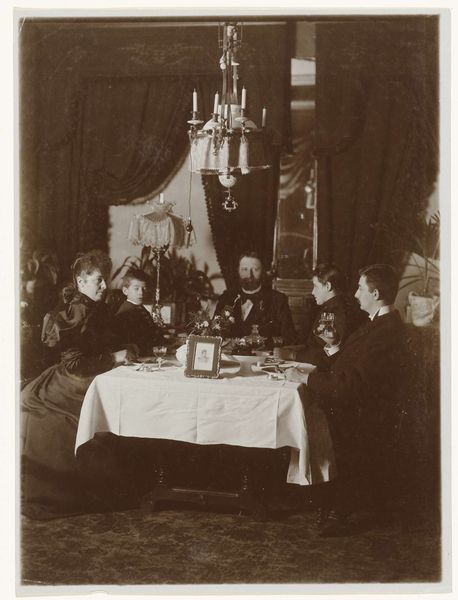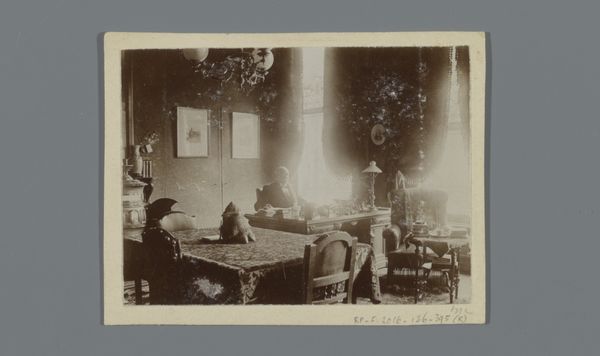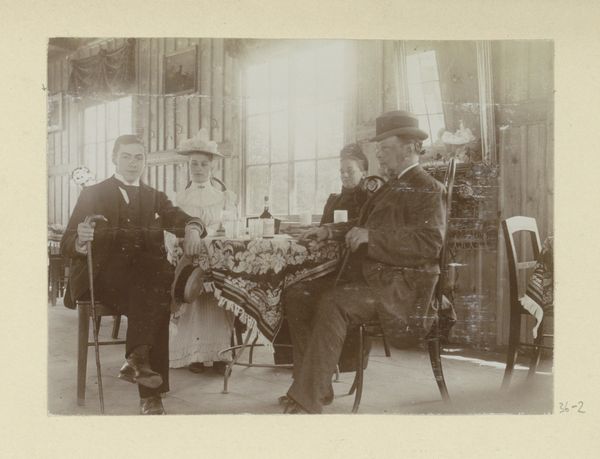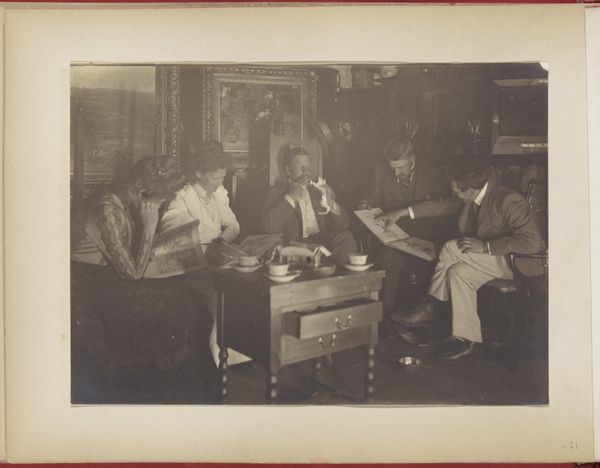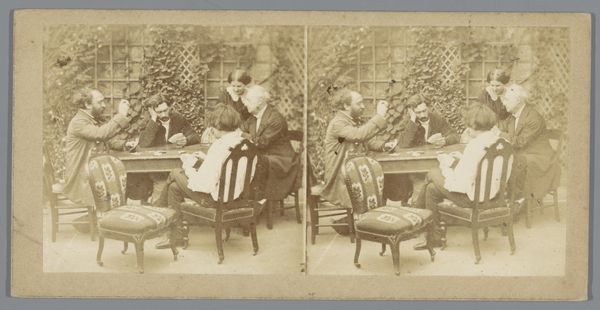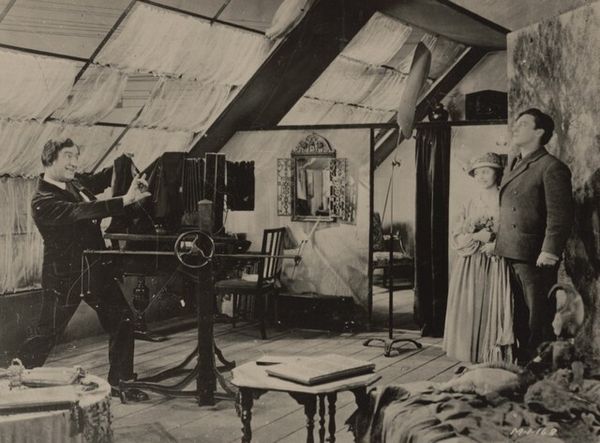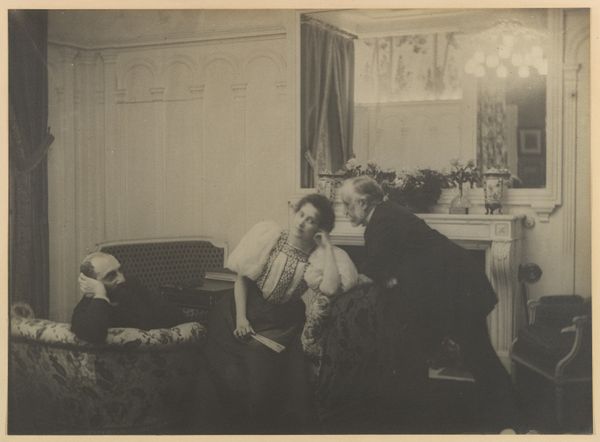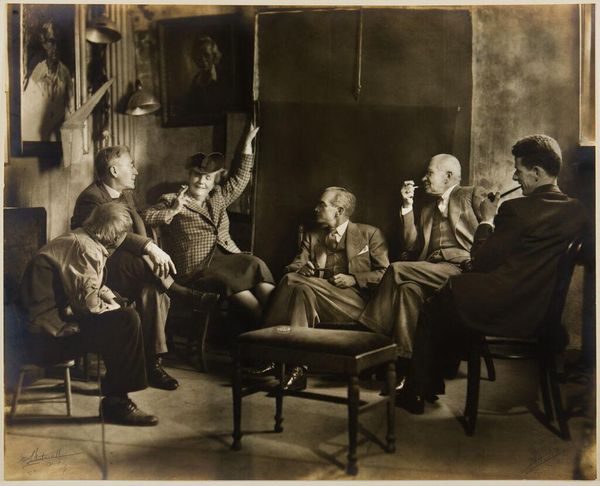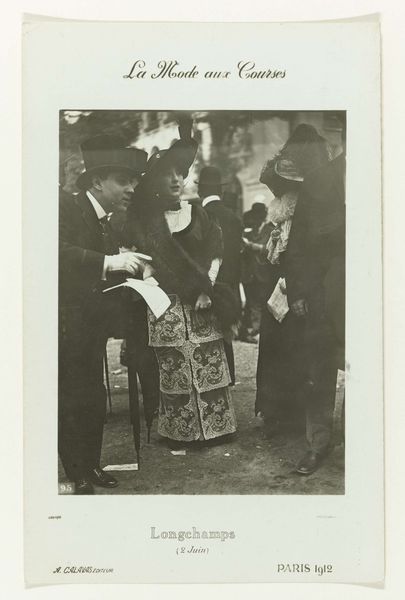
Familie aan tafel en aan de piano, thee of koffie drinkend en lezend in De Kampioen 1895 - 1905
0:00
0:00
Dimensions: height 178 mm, width 237 mm
Copyright: Rijks Museum: Open Domain
Curator: This gelatin-silver print, taken sometime between 1895 and 1905, captures a family at leisure. It's credited to Henri Osieck and is titled "Familie aan tafel en aan de piano, thee of koffie drinkend en lezend in De Kampioen." Quite a mouthful! Editor: It feels incredibly staged, doesn’t it? There's a warmth, but it is overshadowed by the subjects being aware they're being observed. The tones of the image lend it an austere, nostalgic air, almost as if it is deliberately aged and tinted in sepia tones. Curator: Yes, while staged, it’s a fascinating study in compositional arrangement. Note how the artist uses the table and piano to create distinct zones within the frame. The patterned tablecloth provides texture, offsetting the darker, solid tones of the clothing. Editor: Exactly. And the light! It's strategically deployed, almost theatrical. The lamps overhead illuminate the center of the table, but there is shadow play occurring around the edges, isn't there? It highlights the faces, particularly the gentleman reading. I see what they were doing, drinking, and playing... all in an opulent sort of way. A slice of the 19th-century elite. Curator: One could read the setting through a semiotic lens. The objects, the newspaper, the piano, each act as signs referring to bourgeois values of domesticity, education, and artistic cultivation. The materiality of the print, the very substance it’s made of, reminds us of its historical context and cultural value as a family photograph. Editor: Perhaps that's its success – if you call it that. These aren’t candid, revealing moments. These feel studied and curated… much like museum installations. I am half-expecting them to break the fourth wall, though! Curator: An intriguing insight. It highlights the tension inherent in much portraiture – the balance between capturing a likeness and constructing an image. Editor: Ultimately, it provokes thoughts of how we want to be remembered. Or how our descendants will regard us. In the end, I find a slightly hollow note, or sense, to this artwork, though it’s beautiful in so many senses, and one appreciates it from this remove. Curator: Yes, a staged artifact revealing so much about cultural posing.
Comments
No comments
Be the first to comment and join the conversation on the ultimate creative platform.
